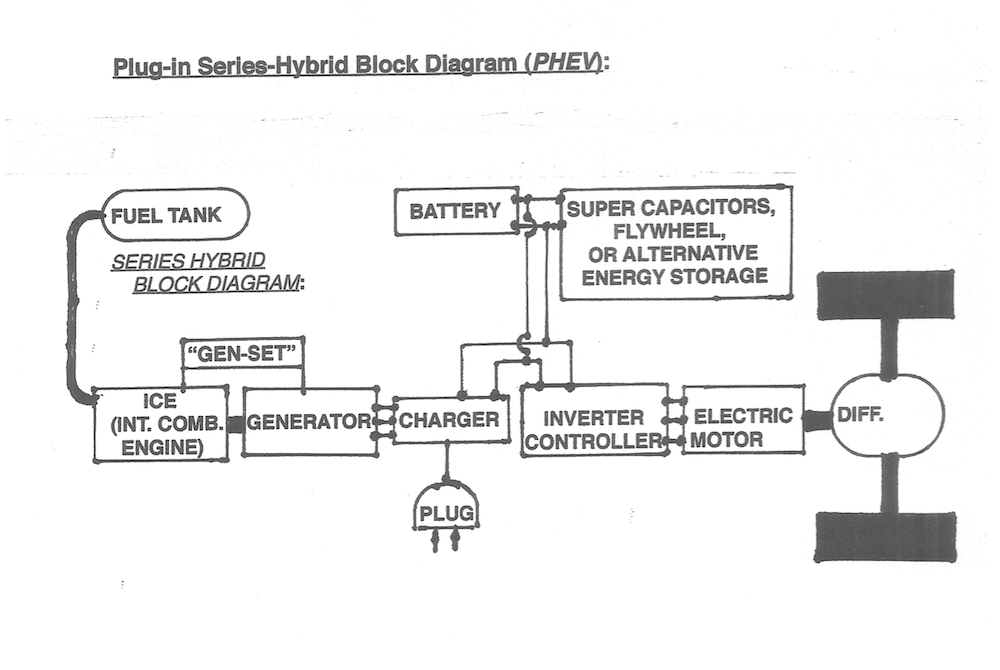

This paper place its focus on optimizing the parameters of the hydraulic hybrid system to enhance energy recovery efficiency, regardless of the braking energy recovery control strategy adopted in the electric or hybrid vehicle. The global optimization of the hydraulic hybrid system and the regenerative braking strategy of the vehicle are two separate parts. Plenty of studies have proved that dynamic programming offers an effective method to improve fuel economy and reduce emissions from hybrid vehicles by properly allocating power between the engine and the secondary power.

Moreover, the optimization strategy for the parameters of the PHHS is matched and analyzed in.
Flywheel for parallel hybrid vehicle software#
Plenty of scholars use hydraulic simulation software to build simulation model of PHHS in order to study the influencing factors for energy recovery efficiency of PHHS. The major factors affecting the energy recovery efficiency of PHHS include driving mode, running conditions, torque coupler transmission ratio, and the main hydraulic components parameters. This provides a strong motivation to develop a more effective energy recovery system for PHHS. It is well known that the vehicles are frequently used to start and stop under the driving condition of the city, and as much as of kinetic energy is lost during the braking process. The current advanced optimal control methods have been developed for OPM, such as those reliant on dynamic programming (DP), conventional model predictive control (MPC), quadratic programming and genetic algorithm (GA), and rule-based control, all focusing on an integrated methodology of propulsion and braking to improve the fuel economy in a typical urban cycle. Optimal power management (OPM) design plays an essential role in improving hybrid power train efficiency.
Flywheel for parallel hybrid vehicle series#
Studies have indicated that PHHS is the simplest way to implement existing nonhybrid architectures as compared to the series and power-split configurations, especially for the commercial vehicles. Hydraulic hybrid systems are extensively applied in the stop-and-go vehicles such as shuttle bus and refuse trucks for their advantages including high power density, high energy conversion efficiency, and high rates of charging and discharging compared with the hybrid electric vehicles which use batteries to store energy. As compared to conventional cars with an internal combustion engine, a car with hybrid power train has greater potential to improve efficiencies in fuel economy and reduce emissions from vehicles, since the brake-regenerated energy can be stored and reused by extra power systems. It has been widely recognized that the fast development of hybrid vehicle (HV) presents a favorable solution to global warming and fossil fuel shortages. This vehicle is used to validate the effectiveness of the proposed method in energy recovery efficiency. Subsequently, we derive a parallel hydraulic hybrid vehicle (PHHV) from adding a hydraulic hybrid system to an electric vehicle in ADVISOR (advanced vehicle simulator). Firstly, a PHHS Simulink model is accurately obtained by repeated comparison with the bench test. Two major steps are involved in verifying the proposed approach. Global optimal solution of pump displacement and transmission ratio under the known urban drive cycles is obtained by using the DP approach, where the total amount of energy recovery is defined as the cost function, and the pump displacement and the transmission ratio of the torque coupler are defined as the deciding variables. In this paper, an optimization algorithm of energy recovery efficiency is proposed for parallel hydraulic hybrid systems (PHHS) using dynamic programming (DP).


 0 kommentar(er)
0 kommentar(er)
